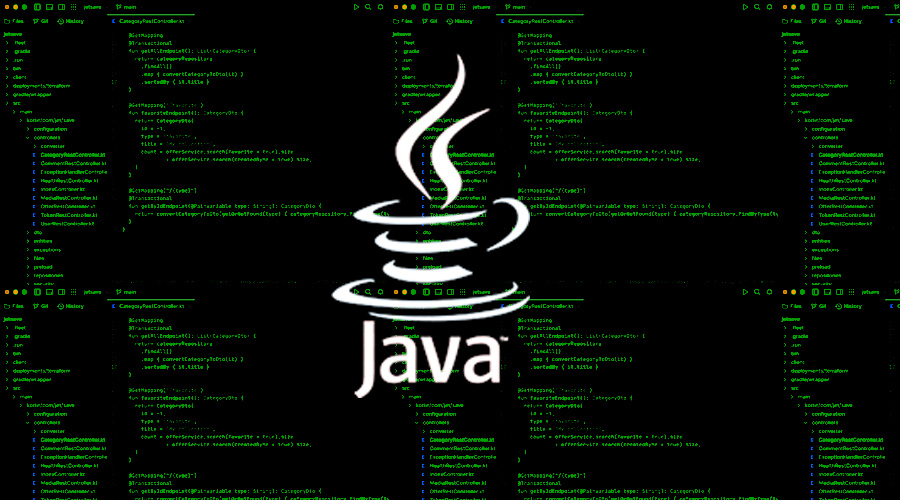Table of Contents
Introduction:
Java is a widely-used programming language, known for its versatility and robustness in developing a wide range of applications. It has been around for over 25 years and is one of the most popular programming languages in the world. In this blog, we will dive into the features, benefits, and applications of this, making it a comprehensive guide to understand the language and its potential.

What is Java?
Java is an object-oriented programming language that was developed by James Gosling and his team at Sun Microsystems in the mid-1990s. It is a class-based, object-oriented language that follows the “write once, run anywhere” principle, meaning that the code written in this can run on any platform that has a Java Virtual Machine (JVM) installed. JVM is a software that allows Java code to run on different operating systems and devices without having to recompile the code.
Features of Java
- Object-Oriented: It is an object-oriented language, which means it follows the principles of object-oriented programming. This allows for efficient code reuse and modularity, making it easier to maintain and update applications.
- Platform Independent: Its code can run on any platform that has a JVM installed, making it highly portable. It code is compiled into bytecode, which is then executed by the JVM.
- Simple and Easy to Learn: It has a simple and easy-to-learn syntax, making it a great choice for beginner programmers. The language is designed to be self-contained, and its features promote good programming practices, making it easy to write and maintain Java code.
- Secure: It has built-in security features that make it a secure language for developing applications. It’s security model is based on the principle of “sandboxing,” which isolates applications from each other, reducing the risk of security vulnerabilities.
- Multithreaded: It supports multithreading, which means that multiple threads can run concurrently within a single program. This feature makes it ideal for developing applications that need to handle multiple tasks simultaneously.
- Dynamic and Extensible: It is a dynamically-typed language, meaning that the type of a variable is determined at runtime. It also has a rich API and libraries, making it easy to extend its functionality to meet the specific needs of an application.
Benefits of Java
- Large Community: It has a large and active community, making it easy to find support and resources for developing applications. The community also contributes to the development of the language, providing new features and updates.
- Widely Used: It is widely used in various industries, such as finance, healthcare, e-commerce, and gaming, making it a great choice for developing applications for these industries.
- Scalable: It is highly scalable, making it ideal for developing large-scale applications. Its object-oriented design and powerful libraries make it easy to add new features and functionality to an application as it grows.
- Robust: It’s strong type checking and automatic memory management prevent errors and reduce system crashes.
- Large Library: It has a large and well-documented library of classes, which makes it easy to develop a wide range of applications.
- Community Support: It has a large and active community of developers, making it easier to find help and resources when you need it.
- High-Performance: It is designed for high performance and can be optimized to run efficiently on a wide range of devices.
- Multi-threading: It has built-in support for multithreading, which makes it possible to run multiple tasks concurrently within a single program.
Java History
This was developed by a team of engineers at Sun Microsystems in the mid-1990s. The language was initially called Oak, but was renamed to Java in 1995. The original goal of this was to create a language that could be used to control consumer electronics devices, such as televisions and VCRs.
However, the team soon realized that the language had much broader potential, and they shifted their focus to developing a language that could be used for general-purpose programming. It was designed to be portable and secure, and it was specifically designed to have as few implementation dependencies as possible. This made it possible to write a program once and run it on any device that had a Java Virtual Machine (JVM) installed.
It was first released in 1995, and it quickly became popular for developing applets, which are small, dynamic applications that run within a web browser. In the late 1990s, Java gained even more popularity as a language for developing server-side applications, and it quickly became one of the most widely used programming languages in the world.
In the early 2000s, it became even more popular with the advent of mobile devices, such as smartphones and tablets. It was one of the first programming languages to be used for developing mobile apps, and it remains a popular choice for mobile app development to this day.
Over the years, It has evolved and improved, and it remains one of the most widely used programming languages in the world. It is used for developing a wide range of applications, including desktop applications, mobile apps, and web-based applications. Its popularity is due to its ease of use, security, and performance, and it is likely to remain a valuable tool for developers for many years to come.

